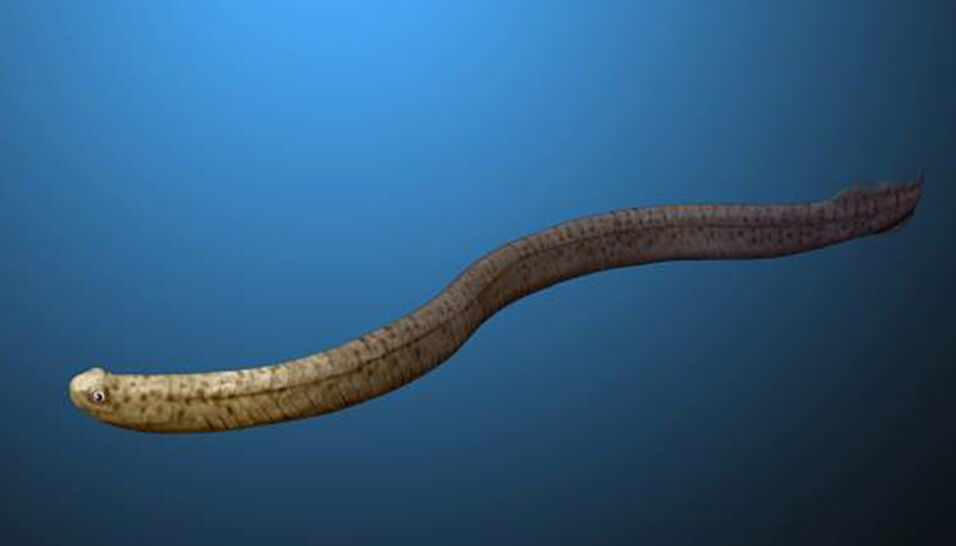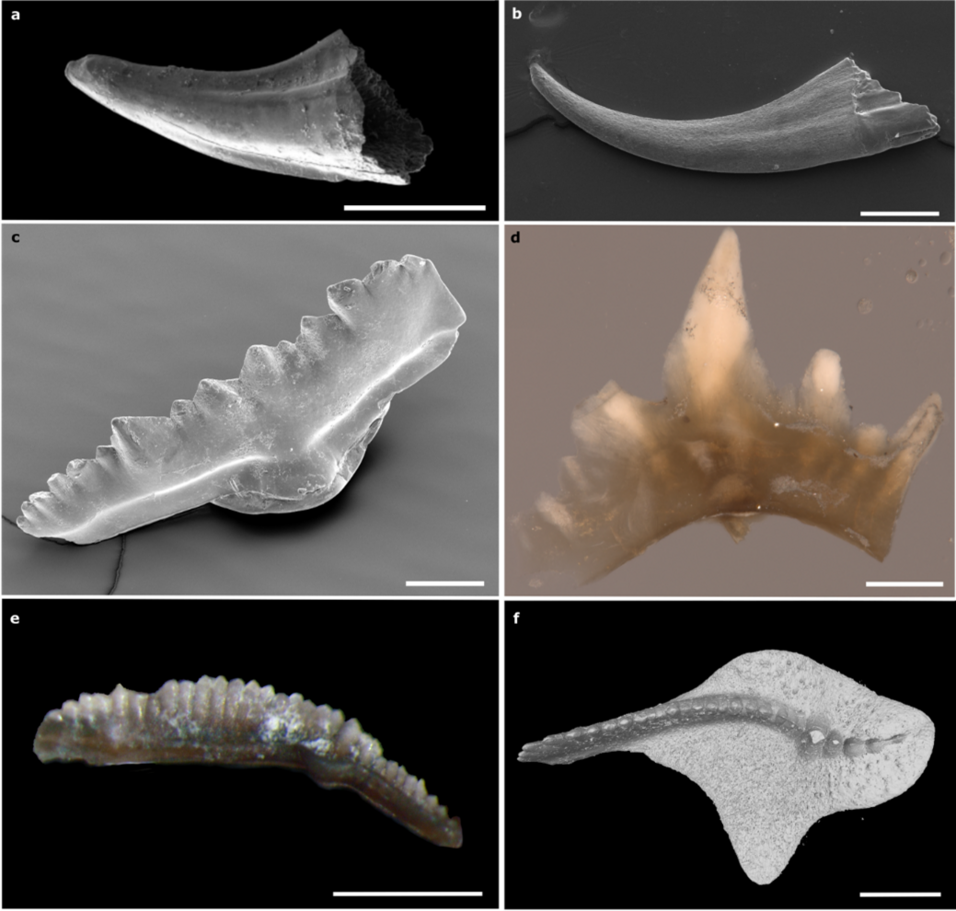The small eel-like conodonts roamed the oceans for around 300 million years and were the first vertebrates that could bite and cut flesh. To do this, they developed tiny tooth-like structures - an evolutionary innovation that led to the development of complex marine trophic food webs.
An international team of researchers now has uncovered fascinating insights into the evolution and development of feeding strategies in the earliest vertebrates. In a study published in Nature Communications, Bryan Shirley (Oxford Instruments) and an international research team- among them Isabella Leonhard from the Department of Palaeontology and Michel Bestmann from the Department of Geology at the University of Vienna - unveiled how the tiny tooth-like structures of conodonts improved through evolution to become more tooth-like: harder and sharper. “These characteristics which we associate with teeth did not appear at once, but emerged, as we were able to show in our study, through gradual improvement of the internal structure of teeth,” explains the palaeontologist Isabella Leonhard. “We were able to show these evolutionary adaptions by using microstructure analysis techniques.”
Studying the evolution of vertebrates based on fossil teeth
Conodonts were small eel-like animals that were abundant in marine ecosystems from the Cambrian period (around 540 million years ago) but became extinct with the mass extinction at the Triassic-Jurassic boundary (201 million years ago). Their fossil record consists almost exclusively of microscopic mineral teeth. These teeth are the first hard vertebrate fossils to appear in the fossil record and occur in a huge diversity of shapes – from cones to complex platform-like and blade-like morphologies (see Figure). “This shape diversity also reflects a wide range of feeding strategies - from filter feeding and scavenging, to roles as predators,” says Emilia Jarochowska, the project leader from Utrecht University.
Mineralization of first predatory teeth?
It is this diversity within conodonts that has fascinated the scientific community for decades. Bryan Shirley, at the time a postdoctoral researcher at the Utrecht University was therefore determined to find out how these animals were able to develop such great diversity of feeding strategies. Together with the project leader, Emilia Jarochowska and in collaboration with a team of international researchers from the Friedrich-Alexander University Erlangen, the University of Vienna, the University of Warsaw, the University of Oxford, the US Geological Survey and the University of Modena and Reggio Emilia, Shirley set out to test an old hypothesis that the internal crystal structure of conodont teeth had developed through adaptation to stress during biting and slicing and, by modifying the orientations of crystals, became more resistant to breakage.
The team collaborated with material sciences experts to employ advanced techniques including Electron Backscatter Diffraction and Raman Spectrometry to analyze the ultrastructure of conodont teeth. They studied species representing a range of forms from cone-shapes to complex platform types (see Figure). To obtain conodonts representing different feeding strategy and evolutionary stages, they collaborated with researchers in the USA and Poland. The Electron Backscatter Diffraction revealed the arrangement of the microscopic crystals in conodont teeth.
Crystals in early teeth poorly organized
The analysis revealed, that in early teeth the crystals were poorly organized and therefore more susceptible to breakage. In contrast, the more advanced complex conodonts showed highly organized crystal structures, making their teeth much more resistant to breakage.
“The results showed that crystals became increasingly aligned in the direction, in which they would withstand the stress during biting, which is advantageous for the animal when it captures its prey,” says Emilia Jarochowska: “We were therefore able to demonstrates that early vertebrates gained increasing developmental control over the formation of their skeletons, enabling the evolution of diverse and effective tooth shapes and functions.”
One of the collaborators on the project, Duncan Murdock of Oxford University Museum of Natural History, said, “despite being everywhere in marine rocks for 300 million years we know little of how conodonts fed or what drove them to evolve such a bewildering array of shapes of their feeding apparatus. Our study uses the internal structure of the elements themselves to begin to unravel these mysteries.”
Publication
Bryan Shirley, Isabella Leonhard, Duncan J. E. Murdock, John Repetski, Przemysław Świś, Michel Bestmann, Pat Trimby, Markus Ohl, Oliver Plümper, Helen E. King & Emilia Jarochowska (2024): Increasing control over biomineralization in conodont evolution. In: Nature Communications 15, 5273. https://doi.org/10.1038/s41467-024-49526-0https://doi.org/10.1038/s41467-024-49526-0


